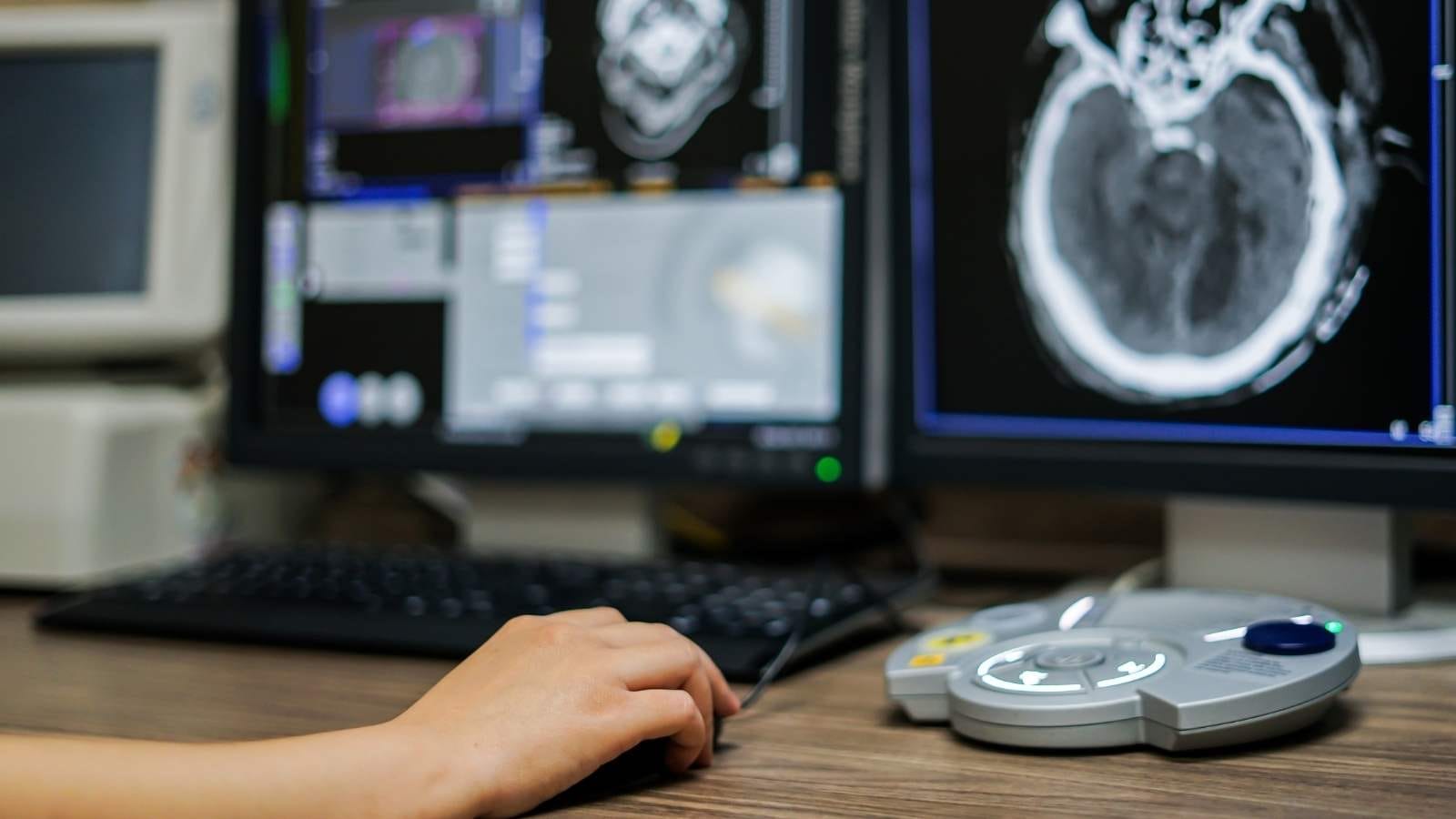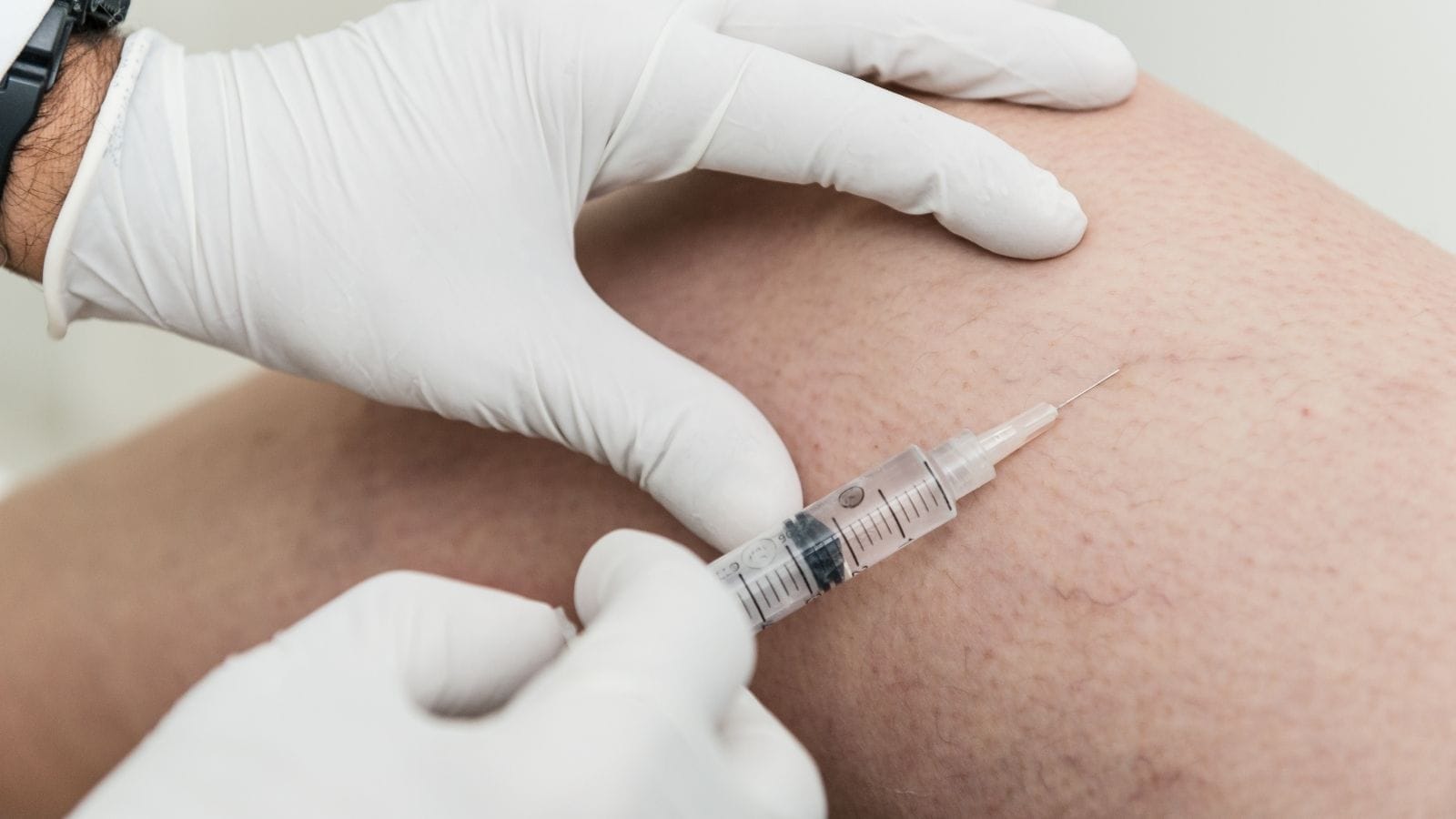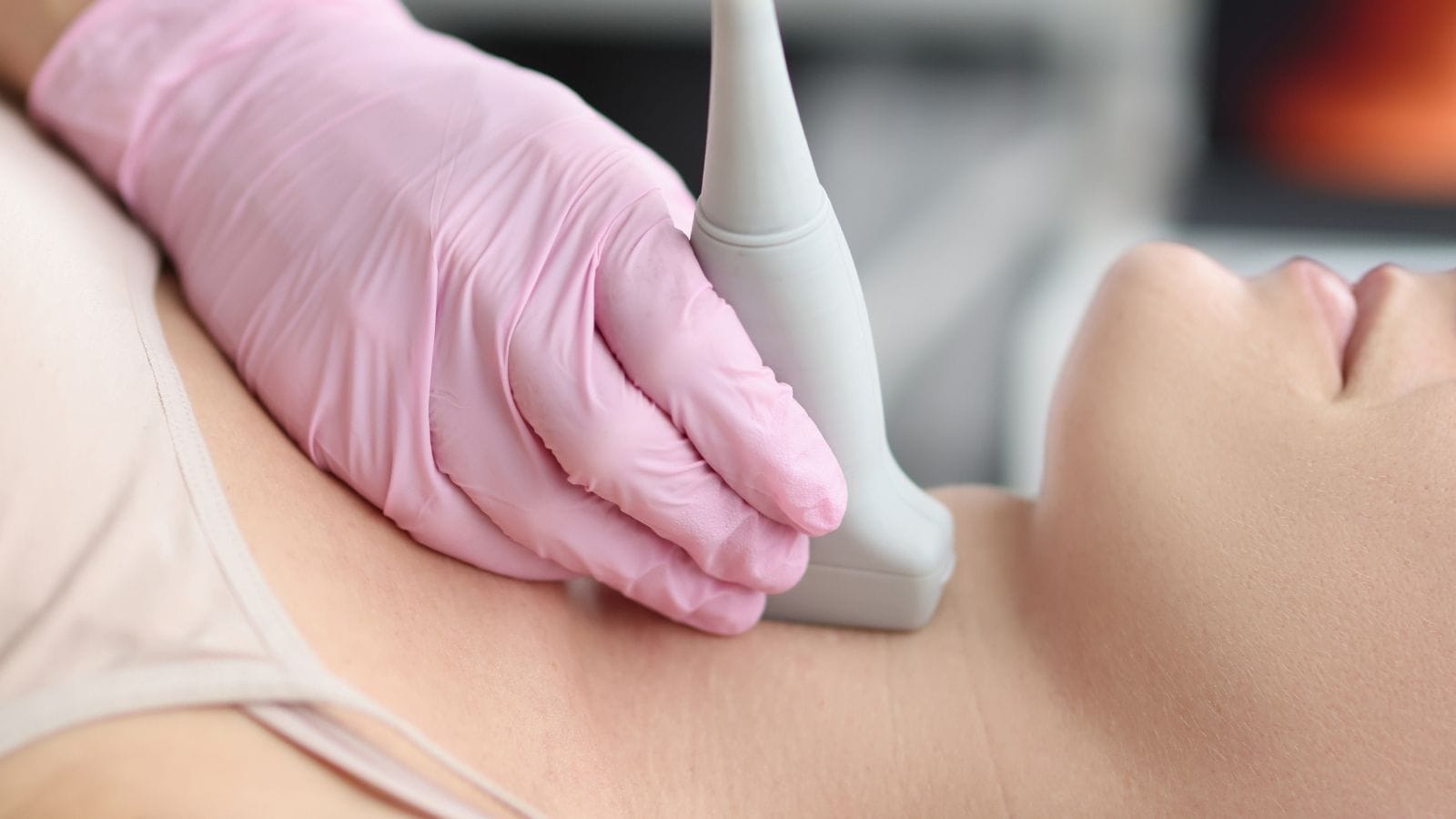A thyroid nodule becomes concerning when it exceeds 1 cm with suspicious ultrasound features or grows beyond 4 cm regardless of imaging findings. Larger nodules may carry increased risk of malignancy and compression symptoms.
Ultrasound characteristics such as irregular margins, microcalcifications, and hypoechogenicity indicate higher cancer risk. Fine-needle aspiration biopsy is often recommended to confirm diagnosis in nodules of suspicious appearance.
Nodules larger than 4 cm may cause difficulty swallowing, hoarseness, or airway compression. Even if benign, their size alone can justify surgical removal to prevent life-threatening complications.
Endocrinologists assess nodule risk by combining size, ultrasound findings, and patient history. Individualized follow-up or surgery ensures timely intervention and minimizes unnecessary procedures.
When Does Thyroid Nodule Size Become Concerning?
The size of thyroid nodules is an important factor in determining potential health risks. Certain size thresholds are critical for the management and follow-up of nodules. These thresholds are as follows:
1 cm:
These small nodules usually do not require a biopsy.
1–2 cm:
Biopsy is recommended if nodules in this size range appear suspicious.
2 cm:
Nodules of this size or larger generally require a biopsy due to an increased risk of cancer.
4 cm:
In nodules of this size, the risk of cancer increases by approximately 15%, and surgical intervention is often recommended.
As thyroid nodules increase in size, the risk of cancer and other health problems also increases. The size of the nodules affects not only the cancer risk but also physical complications such as difficulty swallowing or breathing. Therefore, large nodules usually require more intensive medical intervention.
What Symptoms Do Large Thyroid Nodules Cause?
As thyroid nodules grow, they manifest with various symptoms. These symptoms are usually directly related to the size and location of the nodule. Large nodules press on surrounding tissues in the neck region and cause certain discomforts. This leads to various symptoms in patients.
Visible Lump or Swelling:
A lump easily noticeable in the neck appears.
Difficulty Swallowing:
Pressure on the esophagus leads to trouble swallowing.
Difficulty Breathing:
Pressure on the trachea causes breathing problems.
Voice Changes:
Pressure on the nerves leading to the vocal cords causes hoarseness in the voice.
Neck Discomfort:
A constant feeling of fullness or pressure is experienced in the neck.
Pain:
Pain starting from the front of the neck and radiating to the jaw or ear can occur.
Throat Tickling or Cough:
Pressure from the nodule may cause throat irritation or a persistent cough.
Is There a Relationship Between the Size of Thyroid Nodules and Cancer Risk?
As the size of thyroid nodules increases, so does the risk of cancer. Studies show that this risk is especially notable in nodules 2 cm and larger. Small nodules generally carry a low risk, while malignancy rates start to rise in nodules exceeding 2 cm. This is considered an important factor in the management of thyroid nodules. In addition, the risk of cancer in different size ranges can be listed as follows:
- Nodules between 1 and 1.9 cm: about 10.5%,
- Nodules between 2 and 2.9 cm: 13.5%,
- Nodules between 3 and 3.9 cm: 16.3%,
- Nodules of 4 cm and above: 15.0%.
These rates vary according to nodule size, and larger nodules have a higher chance of being aggressive types of thyroid cancer. Especially aggressive types like anaplastic thyroid cancer are more common in large nodules.
How Are Thyroid Nodule Sizes Measured and Monitored?
The sizes and features of thyroid nodules provide important information for patient management. Ultrasonography is used for detailed imaging of the thyroid gland and any nodules present. With this method, it can be determined whether nodules are solid or cystic. The exact size of nodules can also be measured. Ultrasound plays a critical role in determining treatment options according to the nature and size of the nodules.
Size Measurement:
Nodule sizes are measured in millimeters. As the size of the nodule increases, the risk of malignancy and physical symptoms also increases.
Monitoring:
Small and benign nodules are monitored regularly with ultrasound. Any change in their size is recorded in detail.
If a nodule is 4 cm or larger, surgical intervention is generally recommended. Nodules of this size can cause physical symptoms such as difficulty swallowing or breathing and have a higher likelihood of being malignant. For smaller nodules, the follow-up process is adjusted according to the growth rate and ultrasound features of the nodule.
The Thyroid Imaging Reporting and Data System (TI-RADS) classifies the risk of malignancy based on the ultrasound features of nodules. This system helps determine which nodules should be referred for biopsy. Nodules with a high TI-RADS score are monitored more carefully and biopsy is recommended if necessary. Nodules with a lower score are generally kept under observation at specified intervals.
What Factors Accelerate the Growth of Thyroid Nodules?
Various factors contribute to the growth of thyroid nodules. First, hyperfunctioning thyroid nodules are known for excessive thyroid hormone production. This can lead to hyperthyroidism and accelerate the growth of nodules. Chronic inflammation resulting from autoimmune diseases also triggers the formation of nodules. Iodine deficiency directly affects the function of the thyroid gland and creates a predisposition for nodule formation.
Hyperfunctioning Thyroid Nodules:
Produce excessive thyroid hormone.
Chronic Inflammation:
Chronic inflammation of the thyroid gland due to autoimmune diseases.
Iodine Deficiency:
Inadequate iodine needed by the thyroid gland.
Radiation Exposure:
Exposure to radiation, especially during childhood, can trigger nodule growth.
Genetic Factors:
Family history of thyroid nodules or cancer.
Age and Gender:
Increasing age and being female increase the incidence and growth rate of nodules.
Thyroid Stimulating Hormone (TSH):
High TSH levels, especially in goiter, promote nodule growth.
Excess Growth of Normal Thyroid Tissue:
Benign thyroid adenomas that grow over time.
Can Small Thyroid Nodules Be Dangerous?
Small nodules in the thyroid gland can sometimes be dangerous. While these nodules are mostly considered benign, in rare cases they can lead to serious health problems. Especially those smaller than 1 cm are usually considered harmless, but the cancer risk increases in nodules 2 cm and above. In addition, larger nodules can affect thyroid function and cause various symptoms. For example:
- Hyperthyroidism
- Weight loss
- Rapid heartbeat
- Nervousness
These symptoms vary depending on the size and location of the nodules. Even if benign, large nodules can cause physical complications such as difficulty breathing and swallowing. Therefore, thyroid nodules should be monitored regularly.
Which Treatment Methods Are Applied According to Thyroid Nodule Size?
The treatment methods used for thyroid nodules differ according to the size and features of the nodule. The treatment process begins with the necessary investigations to determine whether the nodule is malignant. Small nodules are usually monitored if they do not pose a significant risk, with regular ultrasound examinations. For medium-sized nodules, fine needle aspiration biopsy may be performed if suspicious. Periodic monitoring is recommended for nodules diagnosed as benign.
The situation is more complex with large nodules:
- If the nodule has suspicious features, fine needle aspiration biopsy is usually performed.
- For non-cancerous but large nodules that cause symptoms such as difficulty swallowing or breathing, radiofrequency ablation or surgical intervention may be preferred.
- In cases of hypothyroidism, hormone therapy can be used to control growth.
Large nodules, especially those with a high cancer risk, should be evaluated carefully:
- Nodules larger than four centimeters are usually removed surgically.
- Nodules diagnosed as cancer are treated surgically. The treatment may involve lobectomy or a more extensive surgical intervention depending on the spread of the cancer.
- In cases of active hyperthyroidism, radioactive iodine therapy or anti-thyroid medications are used to reduce nodule size.
These methods are determined by the physician based on the features of the nodule and any accompanying conditions.
Frequently Asked Questions
Are there lifestyle or dietary measures individuals can take to prevent the formation of thyroid nodules?
Although the exact cause of thyroid nodules is not always clear, certain factors may help reduce the risk. Maintaining a balanced iodine intake is critical; neither excessive nor insufficient iodine is recommended. Eating a varied and balanced diet and avoiding processed foods support overall thyroid health. Adequate intake of minerals such as selenium and zinc is considered beneficial for thyroid function. Protecting the neck area from unnecessary radiation, such as using a thyroid shield during dental X-rays, is also important. General health recommendations like regular exercise and maintaining a healthy weight can positively affect thyroid health indirectly.
Are thyroid nodules solely caused by genetic predisposition, or are environmental factors more dominant? How much does a family history of thyroid nodules increase the risk?
Both genetic predisposition and environmental factors play a role in the development of thyroid nodules. Individuals with a family history (first-degree relatives) of thyroid nodules or thyroid cancer have a somewhat higher risk than the general population. However, this does not mean that everyone with a family history will develop nodules. Environmental factors such as iodine deficiency and exposure to radiation (especially during childhood) are also important contributors. It is accepted that nodules arise from a complex interaction of genetic and environmental factors.
What foods should a person with a thyroid nodule pay special attention to or definitely avoid in their daily diet?
In general, a healthy and balanced diet is recommended for individuals with thyroid nodules. Since iodine intake is critical, the use of iodized salt is generally sufficient unless the doctor advises otherwise. However, if there is an active nodule causing hyperthyroidism or if there is a concurrent autoimmune thyroid disease (such as Hashimoto’s), iodine intake should be discussed with a doctor. Raw goitrogenic foods (such as broccoli, cabbage, radish, and cauliflower) are generally not a problem unless consumed excessively; cooking reduces their goitrogenic effects. Caution is also advised with highly processed foods, excessive consumption of soy products, and gluten-containing foods in individuals with gluten sensitivity, but these are case-specific and require a doctor’s advice.
What should patients expect after thyroid nodule surgery (thyroidectomy), and what should they especially pay attention to?
The recovery period after thyroid nodule surgery is usually quick. Hospitalization typically lasts 1–2 days. After surgery, mild pain in the neck, difficulty swallowing, and hoarseness may be seen; these symptoms are usually temporary. Stitches are typically removed within a week or dissolve on their own. If the entire or most of the thyroid gland is removed, lifelong thyroid hormone medication (levothyroxine) is required. The dosage is regularly adjusted based on blood tests. If the parathyroid glands are damaged, affecting calcium levels, additional calcium and vitamin D supplements may be needed. It is important to attend follow-up appointments as recommended by the doctor and to follow wound care instructions after surgery.
What are the risks for the mother and baby when thyroid nodules are detected or present during pregnancy, and what kind of monitoring and treatment approach is adopted during this period?
Increased hormone levels during pregnancy can cause existing thyroid nodules to grow slightly or make new nodules noticeable. Most thyroid nodules are benign and do not adversely affect pregnancy. However, if the nodule causes hyperthyroidism (excess thyroid hormone production) or is suspected of cancer, closer monitoring is required. Healthy thyroid function during pregnancy is essential for the baby’s brain development. Ultrasound can be safely used to evaluate suspicious nodules during pregnancy. Fine needle aspiration biopsy may also be performed during appropriate periods of pregnancy if necessary. Treatment is generally postponed until after pregnancy, but in urgent cases (such as compressive symptoms or aggressive cancer), safe treatment options during pregnancy can be considered.

Interventional Radiology and Neuroradiology Speaclist Prof. Dr. Özgür Kılıçkesmez graduated from Cerrahpaşa Medical Faculty in 1997. He completed his specialization at Istanbul Education and Research Hospital. He received training in interventional radiology and oncology in London. He founded the interventional radiology department at Istanbul Çam and Sakura City Hospital and became a professor in 2020. He holds many international awards and certificates, has over 150 scientific publications, and has been cited more than 1500 times. He is currently working at Medicana Ataköy Hospital.









Vaka Örnekleri